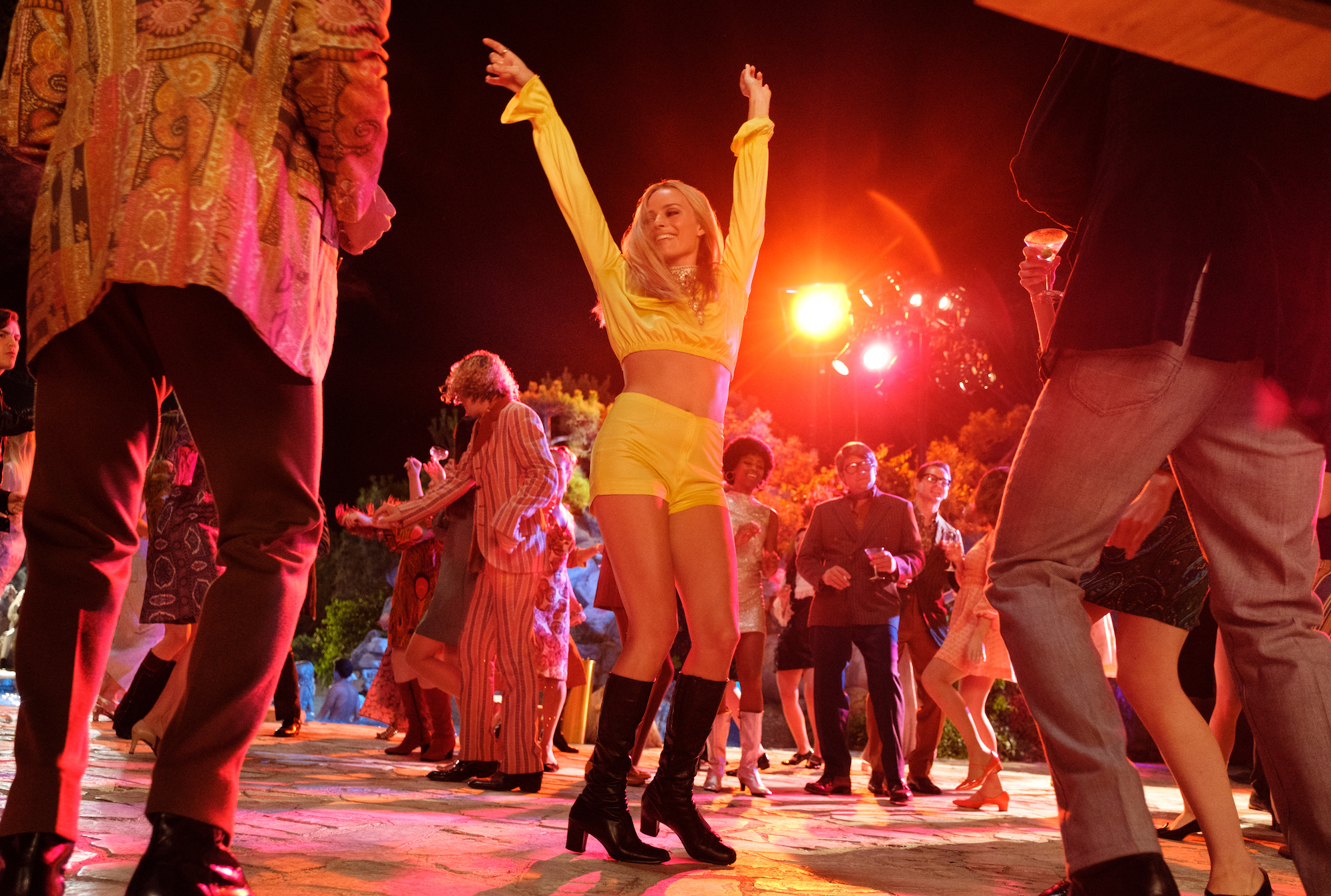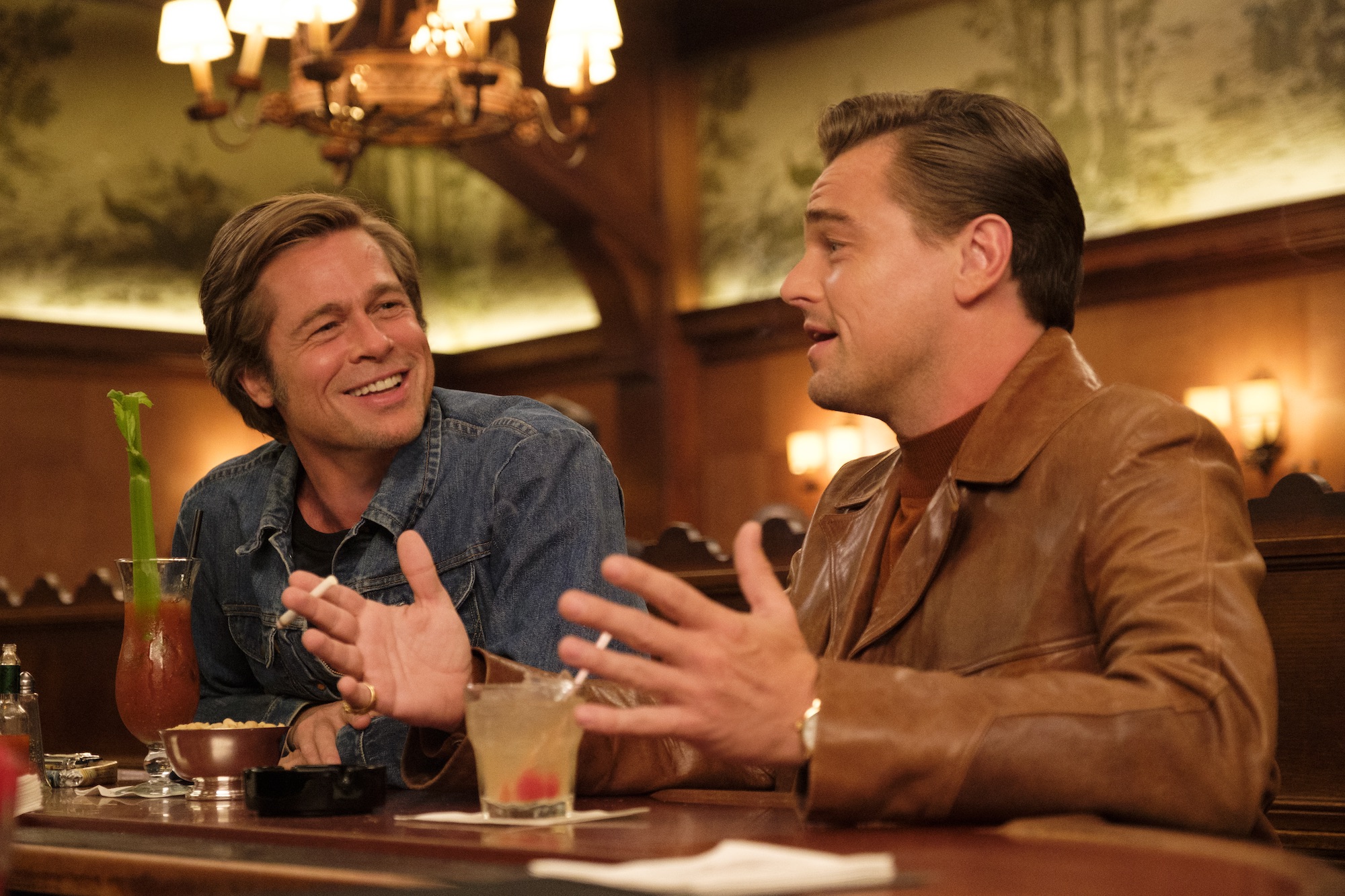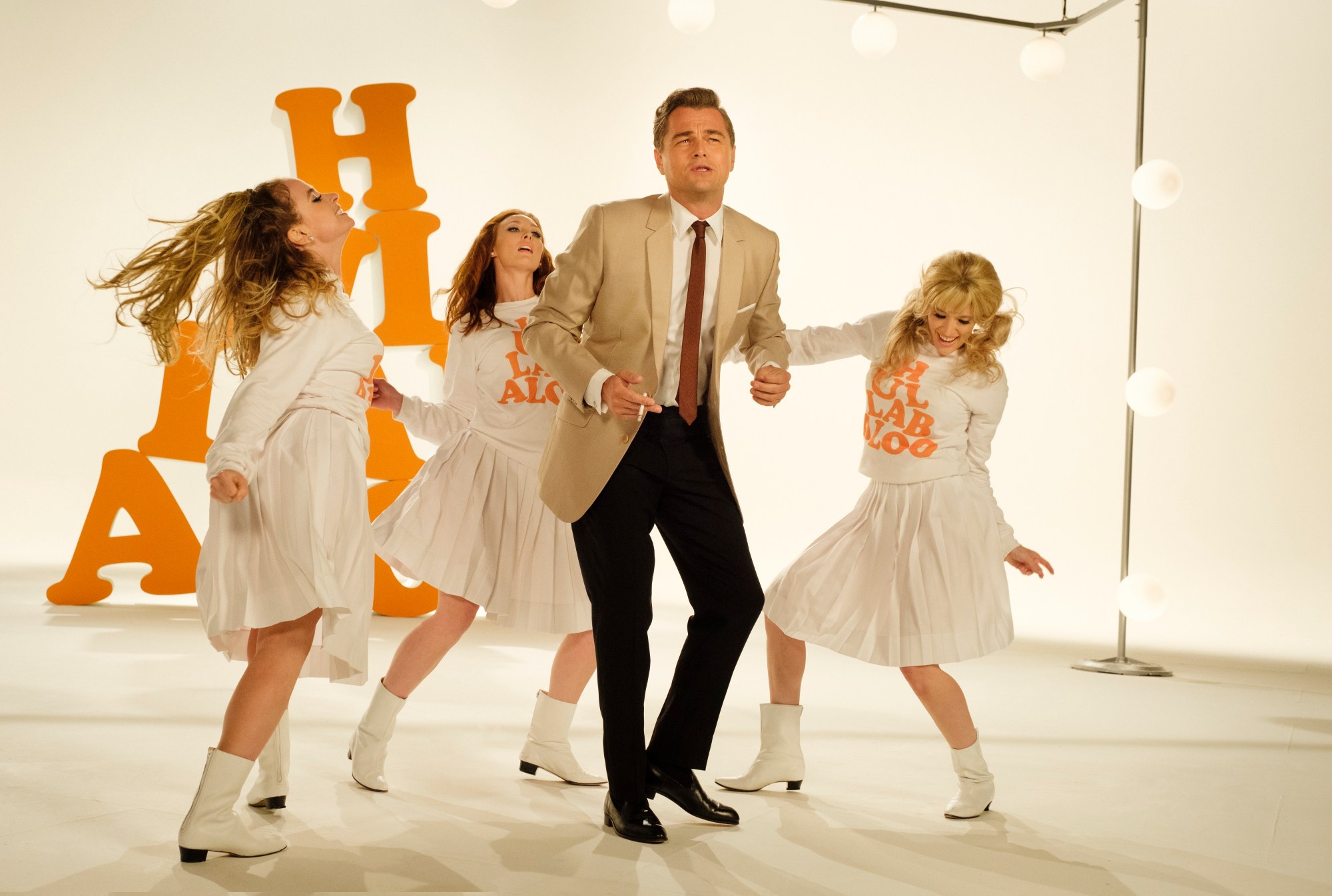Quentin Tarantino moved to Los Angeles at the age of three. He was, in some ways, always a product of the town, having been conceived there on a trip his mother took four years prior. His mother married his father, subsequently divorced him, and moved back to her hometown of Knoxville, Tennessee where Tarantino was born and raised until their return to LA in 1966. The gravity of tinseltown has never seemed to stop pulling at him, whether on screen or off. Tarantino’s early classics, from Reservoir Dogs to Jackie Brown, are all set in the town at the intersection between grit and glamour, and always with an eye turned towards the idiosyncrasies—real or imagined—that make up its character. After a stint in the wilds of Nazi Germany, the antebellum American South, and postbellum Telluride, Once Upon A Time…In Hollywood is his return home and a loving tribute to the movies and city that forged his unique perspective.
Tarantino has been running a film series comprised of 60s and 70s movies he claims inspired his latest movie out of New Beverly Cinema, a theater he owns in Los Angeles. Among the films is The Mad Bomber, a vigilante revenge film from 1973. The movie’s connection to Tarantino’s work in general is clear, with his latter career work focusing on a sort of retributive justice that takes the shape of alternate histories. It also belies his interest in shocking violence with fuzzy to nonexistent moral undercurrents.

He has included several double features in the series, most centered around a certain star or theme. Included are the Raquel Welch starring western 100 Rifles,’ the sci-fi adventure Fantastic Voyage, and the Natalie Wood vehicles Gypsy and This Property is Condemned. Another double feature stars Jane Fonda. The movies are all major studio productions featuring a golden age Hollywood starlet and many are westerns. All three factors play into the sun drenched hybrid of homage and re-creation that is Once Upon a Time and provide some of the movie’s main points of reference.
Once Upon a Time…In Hollywood is the story of Rick Dalton (Leonardo Dicaprio), a former leading man that found fame playing classic heroes in Westerns, now aging into relative irrelevance, and his trusty stunt double turned driver, handyman, and platonic life partner Cliff Booth (Brad Pitt). These two, while undoubtedly inspired by an amalgamation of archetypes and real stars of the era, are fictional. Dalton’s neighbor Sharon Tate (Margot Robbie) is not. The movie follows the three through a patient narrative that finds Dalton struggling to revamp his career and kick a debilitating alcohol habit, while Tate quietly revels in her newfound stardom and Booth finds himself in a pickle with a group of deceptively vicious hippies. As is Tarantino’s style, the plotlines eventually dovetail into a climax of brutal violence and gleeful gore, but this is the first time that the violence feels like a narrative inevitability rather than the engine that necessitates the plot.
The director’s casting here is, as always, inspired. Tarantino allows Pitt to relax into his considerable charm and often unappreciated sense of humor by giving Booth a touching loyalty to Dalton that lets his famous mug do most of the talking. It results in what might be the best performance of Pitt’s career. Dicaprio is as intense as usual, but this time in a performance that’s somehow both soulful and technically impressive. He’s an actor playing an actor struggling with being a convincing actor, a turducken of a role that he pulls off with aplomb. Dicaprio’s ability to modulate sorrow, anger, bruised ego, and drunken confidence should earn him another Oscar nomination.

Robbie’s Tate has few lines, a choice that welcomed critique of the role of women in Tarantino’s films after Once Upon a Time premiered at Cannes. But Robbie is warm and kind in a role that necessitates the innocence with which she imbues the character. There’s a scene midway through the movie in which Tate, bopping around LA, sees her name on a theater marquee. She stops in and asks if she can see the movie for free since she’s in it. Most performers would play the request as the self-aggrandizing selfishness of a newly famous person, but it’s clear through the performance that Tate is only there to bask unselfishly in the appreciation of her dreams coming true.
Once Upon a Time is the only Tarantino movie that leaves the viewer with a sense of warmth and afterglow—a feeling that usually accompanies films by creators with much softer reputations. His movies can be gleeful and crushingly well made bursts of wish fulfillment and razor sharp dialogue, but this is the first time one has felt kind. It feels like this testament to old Hollywood is Tarantino indulging his soft spot and letting the light in.
Dalton’s arc is the most emotional, as he’s the vessel through which we see a man forced into irrelevance by a sea change in his industry. It leaves his brand of stardom outdated. Dalton’s friendship with Booth is all gentleness and mutual devotion, not the bro-y chest thumper it could’ve been, and the conclusion of both of their stories is unquestionably affecting and surprisingly uncynical. Tarantino allows a hero to be a hero in the eyes of someone he never knew admired him, and a friend to be the guardian he always has been. Dicaprio’s performance of the former is so moving that I’m still reeling from it.

Despite the warmth, it’s still a Tarantino movie. It features a scene where Booth kicks Bruce Lee’s ass, a scene where Dalton has a conversation with a precocious child actor that doubles as an obvious and hilarious metaphor for his own insecurities, and there are plenty of foot shots. Tarantino’s love of outsized metaphor is present, evidenced by the fact that Charles Manson’s youthful hippie tribe lives in the old run down ruins of a western film set. There’s a brilliant deployment of Chekhov’s flamethrower and the stunt casting of several children of celebrities, including Margaret Qualley and Maya Hawke, the latter of whom Tarantino gifts a non-violent fate he often denied her mother. The artist is still present, but this time it’s you staring into his eyes and often seeing his world through them.
As homage to the Hollywood of yore, as a storybook of LA that feels both lived in and makes one wish they could live inside of it (mostly), and as a career retrospective, the movie works spectacularly. It’s meta without being obnoxious and loving without losing its considerable bite. Tarantino has claimed that this is his penultimate film; he has long promised he would only make ten. Once Upon a Time is a celebration of a wildly successful career in a town he loves, doing exactly what he planned to do since he was a twenty-something video store clerk who knew more about movies than most directors. It might be a quiet goodbye as the kids take over his old western film set. It is a self-granted coronation that somehow comes off as a thank you note rather than a victory lap. Anything else he delivers us after this is merely a gift.

